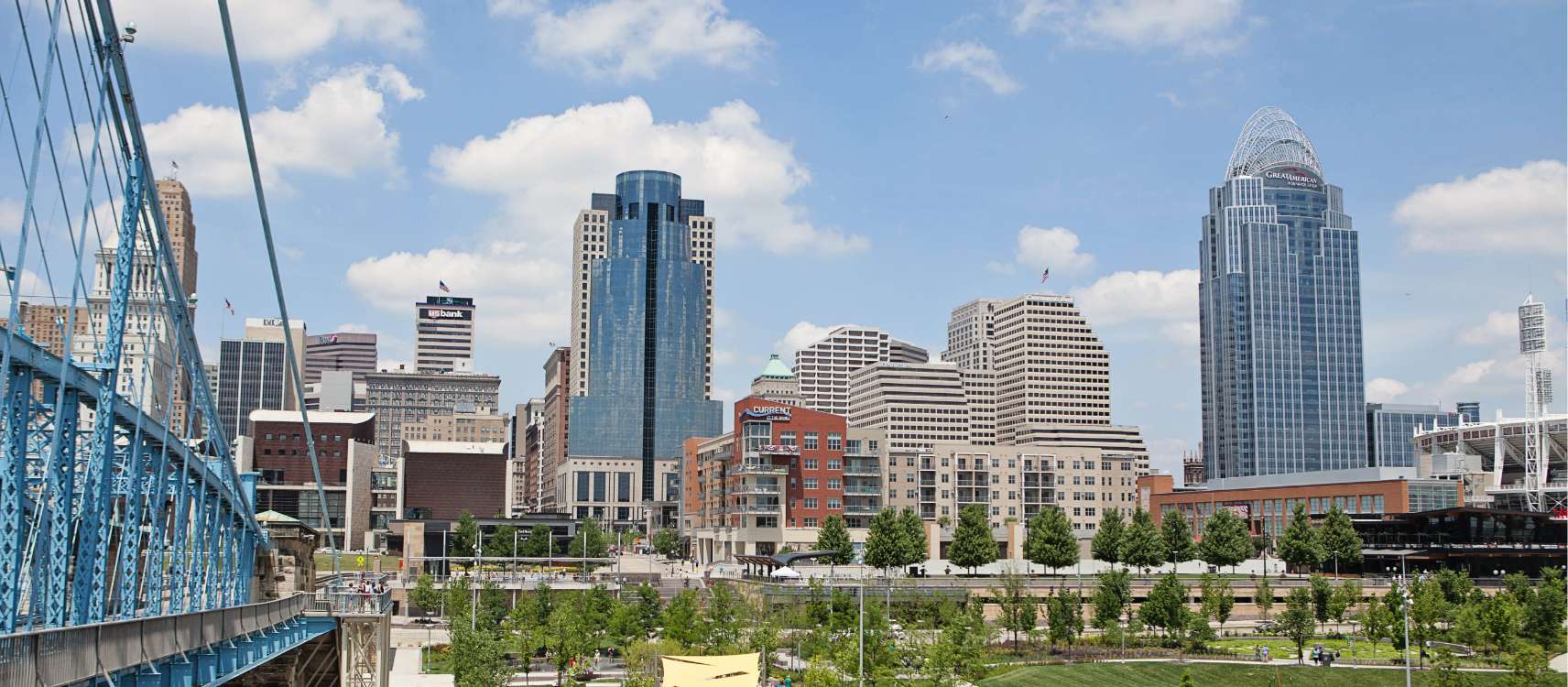Phase I was a smash, but next stage’s mix still up in the air
The Banks brought in five new-to-Cincinnati national restaurant concepts. Four Ohio restaurants opened new locations there. One, Holy Grail Banks, was so successful it started looking at expansion at the site two months after opening.
All in all, the $90 million first phase of the Banks riverfront development, which opened in March 2011, has been a hit.
Laura Swadel, vice president with development partner Carter, said the retail portion of the development more than exceeded expectations.
“The phone has been ringing off the hook with retailers asking, ‘Where can I go in phase II?’” Swadel said.
The answer to that question is still up in the air. Atlanta-based master developers Carter and the Dawson Co., who along with lead equity partner USAA Real Estate Co.built the first 300 apartments and 97,000 square feet of retail space, will start construction on the second phase of the 18-acre mixed-use project later this year.
Phase II will bring service retail
The design approved in 2012 by the Urban Design Review Board includes 300 apartments and another 60,000 square feet of street-level retail space. But Carter isn’t sure if it will include that much retail space in the block just west of the National Underground Railroad Freedom Center, Swadel said. They haven’t decided if retail will wrap around the building as had been planned, or if it would only be along the main corridor of Freedom Way.
Mark Fallon, retail leasing agent for the Banks, would prefer more retail space.
“I wish I had three times the space. Give me 300,000 square feet, I could fill it,” said Fallon, vice president of real estate with Jeffrey R. Anderson Real Estate Inc. “I’m like a hungry dog waiting for you to throw meat on the table.”
Fallon has been tasked with filling arguably the region’s most important real estate development. He’s been responsible for virtually every tenant that’s come to the Banks. All eyes are on him, and the tenants he brings to the development team.
Dining and entertainment have been the focus so far, but that will change with the start of Phase II.
Scott Stringer, executive vice president with Carter, said with the addition of another 300 apartments, about 1,000 residents will be living between the two stadiums. With that many residents comes necessary volume for service-based retailers.
“We’ll have double the number of apartments and residents. You need to get to that size for dry cleaners and other service uses,” Stringer said.
Residents of the Banks, and other downtown residences, will need the basics, such as hair salons, dry cleaners and a coffee shop, Swadel said. In addition, the developers hope to pull in the hundreds of office workers who park at the Banks and walk over to buildings north of Fort Washington Way.
“So many people are moving downtown, there is a general need for these services, not just the Banks residents,” Swadel said.
Early figures from booster group Downtown Cincinnati Inc. show the number of residents in the core rose at least another 3 percent in 2012, to 13,400. In 2011, the downtown population rose 12 percent.
‘It’s making this place interesting’
But Fallon isn’t going to pull back on bringing in national, regional and local restaurant and entertainment concepts.
“We’re going to stick with what’s successful,” he said. “Eating and entertainment are successful. It’s what people want. It’s making this place interesting on a random Tuesday night.”
Even though two retail spaces remain available in Phase I, a 7,200-square-foot space on Walnut Street just north of Smale Riverfront Park and a restaurant pad just west of Yard House, they’re not available for lack of demand. Swadel and Stringer said they’ve vetted at least as many potential tenants as they have existing tenants and decided not to move forward with them.
Swadel said the vetting process includes looking over a potential tenant’s business plan, financial strength, operational history, plans for expansion and growth and a visit to an existing location.
For new concepts coming into the region, Swadel said the Banks usually gets a first look, then decides if it’s the right fit for the development.
More restaurants and entertainment users are still interested in locating at the Banks, said Andrew Sellet, vice president with Cassidy Turley.
“They’ve heard about the success of people opening there,” Sellet said.
To give an idea of how successful current restaurants are, Swadel said there are multiple owners who are looking at putting additional concepts into Phase II.
The road ahead looks a little bit easier than the path that’s already been paved. When construction started in December 2009, retailers faced the challenge of getting loans to expand. The Banks worked with the city of Cincinnati and Hamilton County on a $5.5 million loan for tenant improvement packages so some tenants could build out their space.
Now that a number of national operators are open and already hitting sales numbers, it’s easier to sell companies on coming to Cincinnati, instead of just looking at Chicago, Houston or other markets, Fallon said. A number of potential tenants will be in town for Cincinnati Reds Opening Day to check out the development.
“They’ve been hugely successful,” Fallon said. “And all the nationals talk to each other.”
